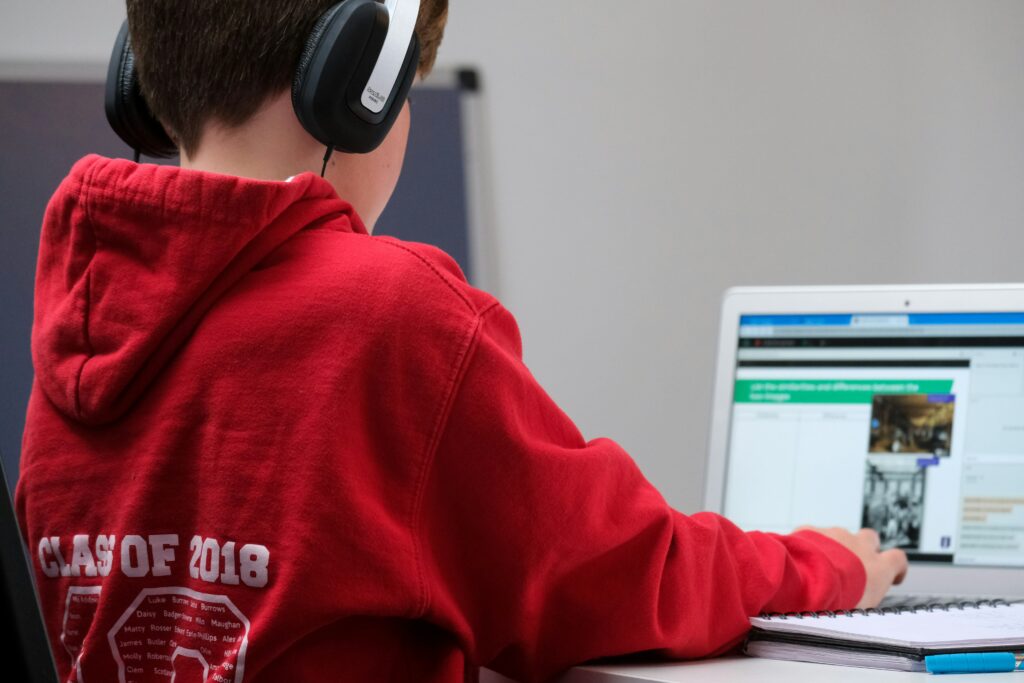From Scribbles to Screens — The Power of AI Note-taking

It started as a jumble of doodles in the back of my science notebook — random sketches of robots, power-ups, and storylines that didn’t make sense together. Like most students, I had a thousand ideas but no clear way to organize them. Between school assignments, exams, and part-time work, my brain felt like a cluttered desktop with too many tabs open. That changed the day I discovered AI-powered note-taking tools.
At first, I thought note-taking apps were just for typing class notes faster. But when I connected an AI assistant to my notes, everything changed. Suddenly, those scattered thoughts became something I could actually use. The AI helped me sort, summarize, and build connections — and those rough sketches slowly evolved into the concept for a video game I eventually finished with a few friends.
Here’s what I learned along the way:
- AI note-taking makes creativity easier. Instead of losing good ideas, I could instantly store and tag them for later.
- Organization happens automatically. The AI grouped notes by topic, so I could see patterns I’d never noticed before.
- It helps you think, not just remember. By summarizing and connecting ideas, it pushed me to plan instead of procrastinate.
- It saves serious time. I could focus on design and story-building instead of scrolling through pages of messy notes.
AI didn’t replace my creativity — it amplified it. It became like a personal assistant that remembered everything I forgot and kept my schoolwork and game ideas separate yet connected. Over time, my notebook full of chaos became the blueprint for something I was proud of: a playable demo built from organized thoughts.
In this article, we’ll explore how you can use AI-powered note-taking to manage classes, develop creative projects, and actually enjoy studying. If you’ve ever felt overwhelmed by information, this guide will show how smart tools can help turn your notes — and your ideas — into something amazing.
How I Turned Messy Notes into a Game — A Step-by-Step Guide Using AI Note-Taking

AI changed everything about my note-taking workflow. Instead of flipping through pages of half-formed ideas, I had a system that captured, organized, summarized, and expanded my thoughts into clear design plans. Below I’ll show the exact process I used, tools that help, and research-backed tips so you can try this with your own project — class work or creative ideas.
The big idea (one-sentence summary)
Use AI to move from raw captures → smart summaries → linked concepts → actionable project tasks, so messy note-taking becomes a playable game design.
Why mix AI with good note-taking habits?
- Handwriting helps you process ideas; typing or AI helps you organize and retrieve them later (Mueller and Oppenheimer).
- AI tools can transcribe lectures, extract action items, and summarize long notes into bite-sized plans (Mem blog; Otter.ai).
- The U.S. Department of Education recommends using AI to support, not replace, student thinking and creativity (U.S. Department of Education 2023).
Combining human thinking and AI gives the best learning and creative outcomes.
Tools I used (quick comparison)
| Tool | Strengths for students | How I used it |
|---|---|---|
| Notion (Notion AI) | Pages, templates, linked databases, AI summaries | Central project hub — research, story outlines, task boards. (Notion) |
| Mem | Automatic organization, AI suggestions | Auto-tagged notes and idea clusters; great for spotting themes. (Mem blog) |
| Otter.ai | Live transcription, summary, speaker labels | Record brainstorming sessions or group meetings and get instant transcripts. (Otter.ai) |
| Evernote | Searchable archive, AI edit and summarize | Quick capture and later semantic search for forgotten snippets. (Evernote) |
These apps overlap, but each solved a piece of the workflow: capture, sort, summarize, and export.
My 6-step workflow (exact steps I followed)
- Capture everything fast
- Use quick short-form notes: voice memo, typed bullet, or photo of a sketch.
- Tools: phone voice note (Otter.ai for transcription), quick Notion page, or Evernote clip.
- Why: capturing is easier than forcing a perfect idea in the moment.
- Auto-tag and organize
- Let the AI suggest tags or use simple tags you control (e.g., “mechanics,” “art,” “level1”).
- Mem’s auto-organization made themes appear I’d missed. (Mem blog)
- Why: grouping similar ideas reveals patterns.
- AI summarization within 24 hours
- Run the day’s captures through an AI summary command (Notion AI, Evernote AI).
- Keep the 3–5 sentence summary as the header for that idea page. (Notion)
- Why: research shows quick review helps memory and keeps projects moving (Ebbinghaus tradition; supported by AI summarization studies).
- Link related notes into a map
- Create a visual map or Notion database that connects mechanics → story beats → assets.
- Use backlinks or a simple table to show relationships.
- Why: games need systems thinking; linking notes turns loose thoughts into a network.
- Turn summaries into tasks and prototypes
- Convert a short AI summary into 2–3 concrete tasks (e.g., “prototype jump physics,” “draw sprite sheet”).
- Put tasks into a project board with deadlines.
- Why: action beats planning — prototypes expose design problems early.
- Weekly cleanup and export
- Once per week, tidy and export key documents: one-page design brief, task list, and asset requirements.
- These exports became the game design document my team used.
- Why: clean handoffs keep group work efficient and reduce rework.
Example: From a doodle to a playable mechanic
- Capture: Photo of a pencil sketch labeled “gravity boots idea.” (Otter.ai note + Notion image)
- Summarize (AI): “Player uses boots to toggle gravity, enabling wall-walk and new puzzle paths.” (Notion AI)
- Link: Add to “movement mechanics” page and tag with “puzzle” and “controls.” (Mem)
- Tasks: Prototype gravity toggle (engineer), create two level sketches (designer), test for nausea (QA).
- Result: Within a week the mechanic existed as a playable prototype — not just a doodle.
Research-backed practices to avoid pitfalls
- Don’t let AI do your thinking. Use it to summarize and suggest, but always add a human check (U.S. Department of Education 2023).
- Preserve handwriting for deep learning: research shows longhand note-taking improves conceptual processing (Mueller and Oppenheimer). Consider snapping photos of handwritten notes and adding them to your AI system.
- Review AI summaries quickly: the forgetting curve means a 24-hour summary-review is crucial to keep ideas usable (classic memory research).
Templates and prompts I used (copy-paste friendly)
- Capture prompt (voice): “Idea capture: one-line description, three expected player actions, why it’s fun.”
- Summary prompt (Notion AI): “Summarize this set of notes in 3 sentences and list 2 quick prototyping steps.”
- Task prompt (task board): “Convert this summary into 3 checklist items with estimated 1–3 hour times.”
Quick pros and cons
- Pros: faster organization, better retrieval, clearer project plans, and fewer lost ideas.
- Cons: tool cost, potential overreliance, and occasional AI errors — always validate results.
Final tips to make this work in class and for projects
- Use voice capture during group study sessions; transcribe later for shared notes. (Otter.ai)
- Keep a “creative inbox” in Notion or Mem; empty it weekly into project folders. (Notion; Mem blog)
- Make AI summaries short and actionable — don’t ask for essays when you need tasks.
Using AI didn’t remove the messy parts of creativity — it organized them. Good note-taking still starts with your curiosity and attention. The AI simply helped me turn scattered ideas into steps, and those steps into a video game prototype. If you’re a student with half-formed ideas, this method can help you turn noise into something you can actually build.
Turning Notes into Next-Level Creations

AI-powered note-taking is transforming how students learn, create, and stay organized. What was once a messy pile of half-finished thoughts can now become a structured system that supports both academic and creative success. Effective note-taking isn’t about writing everything down—it’s about understanding, connecting, and applying ideas in meaningful ways.
The most successful students using AI tools share a few key habits:
- Consistency: Reviewing notes daily keeps ideas fresh and prevents information overload.
- Summarization: AI-generated summaries make studying faster and highlight main ideas clearly.
- Connections: Linking related concepts across subjects encourages deeper understanding.
- Reflection: Regularly revisiting notes helps students identify progress and areas to improve.
This combination of human thinking and AI organization creates a balance between creativity and productivity. Instead of losing great ideas, students can capture them instantly and use smart summaries to build new projects—from research essays to game prototypes.
Quick FAQ: AI and Note-taking for Students
Q1: Can AI replace traditional note-taking?
- No. AI supports learning but can’t replace the brain’s ability to process and understand concepts deeply. Writing notes by hand still strengthens memory and comprehension.
Q2: Which AI tools are best for students?
- Notion, Evernote, and Mem are popular for beginners. They combine organization, summarization, and tagging features that make studying easier.
Q3: How often should AI summaries be reviewed?
- Reviewing summaries within 24 hours helps reinforce learning and prevents forgetting key points.
Q4: Can AI note-taking help beyond academics?
- Yes. These tools can manage personal projects, brainstorm ideas, and support creative planning in any field.
When used thoughtfully, note-taking with AI becomes more than just a study habit—it’s a lifelong learning strategy. It helps students turn scattered ideas into organized goals and build the confidence to create something meaningful.
If every idea has potential, the real question is—how will students capture theirs today?
Works Cited
“Advantage of Handwriting Over Typing on Learning Words.” PMC, https://pmc.ncbi.nlm.nih.gov/articles/PMC8222525/ Accessed 18 Oct. 2025.
“Handwritten versus Typed Note-Taking Effects on College Students.” The Learning Scientists, 18 July 2024, https://www.learningscientists.org/blog/2024/7/18-1 Accessed 18 Oct. 2025.
“Why Writing by Hand Is Better for Memory and Learning.” Scientific American, https://www.scientificamerican.com/article/why-writing-by-hand-is-better-for-memory-and-learning/ Accessed 18 Oct. 2025.
“Typing Versus Handwritten Lecture Notes and College Student Achievement.” Georgia Southern University Scholars, https://scholars.georgiasouthern.edu/en/publications/typed-versus-handwritten-lecture-notes-and-college-student-achiev
“10 Best AI Note Takers for Students in 2025.” MeetJamie AI Blog, https://www.meetjamie.ai/blog/best-ai-note-takers-for-students Accessed 18 Oct. 2025.
“Murky Guidelines on Using AI Recording Devices in Classrooms.” Inside Higher Ed, 24 June 2024, https://www.insidehighered.com/news/tech-innovation/artificial-intelligence/2024/06/24/murky-guidelines-ai-recording-devices-classrooms Accessed 18 Oct. 2025.


